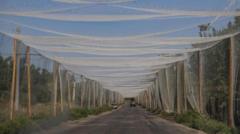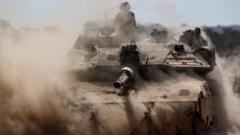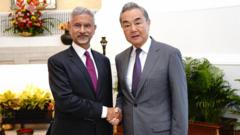Amid ongoing hostilities, Donetsk has become a central point in Ukraine's defense, with its geographical features, urban centers, and fortified positions playing a significant role in the conflict. As Russia seeks to dominate the region, the implications of such a shift could be profound for Ukraine.
The Crucial Role of Donetsk in Ukraine's Defense Strategy

The Crucial Role of Donetsk in Ukraine's Defense Strategy
Understanding why the Donetsk region remains pivotal for Ukraine's military positioning and security as the conflict with Russia continues.
As the conflict in Ukraine persists, the Donetsk region has emerged as a critical battleground. Recent discussions at a summit in Alaska suggested that Russian President Vladimir Putin aims to consolidate control over the area, potentially freezing the war along the existing front lines. Currently, Russia occupies about 70% of Donetsk, including its namesake capital, following years of relentless military engagements.
For Russia, capturing complete control of Donetsk would solidify their unrecognized claims and evade the prospect of additional military casualties. Conversely, Ukraine's potential retreat from western Donetsk poses serious risks, not only in terms of territorial loss but also due to the possibility of a new wave of refugees and loss of a crucial defensive position.
Estimates indicate that Ukraine retains control over approximately 6,600 square kilometers (2,548 square miles) in Donetsk. This region, home to around a quarter of a million inhabitants, encompasses vital urban areas such as Kramatorsk, Slovyansk, Kostyantynivka, and Druzhkivka. Despite its significance as a part of Ukraine's industrial hub, the local economy has suffered significantly from ongoing warfare.
Dr. Marnie Howlett, a lecturer in Russian and East European Politics at the University of Oxford, noted that the region's resources may remain inaccessible for many years due to extensive landmines and destruction. The physical infrastructure, including towns and cities, has been severely impacted, leading to a feeling of resignation among the local populace.
A recent report from the Institute for the Study of War highlights the strategic importance of what is termed a "fortress belt" running through western Donetsk, where Ukraine has invested considerable resources over the past decade into building strong defensive mechanisms, such as trenches and fortified installations. This "fortress belt" is projected to take several years for Russian forces to breach, should they succeed in their attempts.
Topographical challenges also play a role in Ukraine's military defense. Research Fellow Nick Reynolds from the Royal United Services Institute emphasizes that while the terrain poses difficulties for both sides, certain elevated areas like Chasiv Yar have become vital for managing defensive operations and coordinating aerial support.
Despite the critical nature of western Donetsk in the broader 1,100-kilometer front line, alternatives for the Russian military are limited, as any redirection of their forces would likely face entrenched defenses elsewhere. A possible peace agreement could allow Ukraine to pull back strategically, but the task of constructing new defenses would not be without its complications, particularly in unfavorable terrain.
President Volodymyr Zelensky has firmly stated that Ukraine will not yield Donbas territory for a ceasefire, citing the risk of allowing Russian forces to use it as a launching point for future offensives. With stakes this high, control of the Donetsk region will likely remain a focal point of contention between the opposing forces.


















